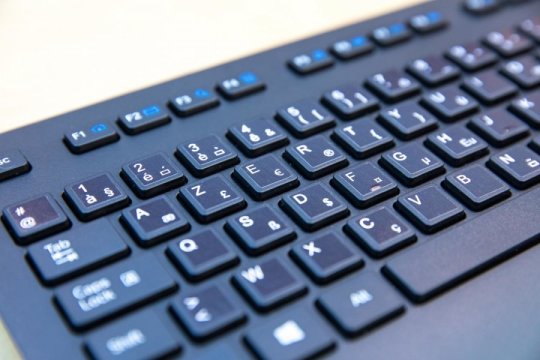[ad_1]
Keyboards touch our everyday lives yet, despite the well-known drawbacks of current layouts used across the globe, the position of characters has largely remained the same. Researchers at Aalto University, as part of an international collaboration, have now used computational methods to place keyboard characters for easier, more comfortable typing. The result is a new keyboard standard created with an advanced algorithm, introduced by France on 2 April 2019.
“Algorithms, like the ones we have developed for the French keyboard, can help us make better decisions. They can quickly evaluate the problems and benefits of different designs and achieve fair compromises. But they also need the guidance from humans who know about the problem,” explains Dr Anna Maria Feit, the lead researcher of the project.
With concern voiced by the French government in 2015 on the existing keyboard — and its inability to support the proper use of French — priority was on creating a new standard that allows easy and quick use of required symbols. The algorithm created by the Aalto University-led team automatically arranged the characters in an optimal way.
The new AZERTY standard includes commonly used characters in the French language, such as œ, ” ,” or É, as well as 60 other new characters, which are arranged in groups predicted by the algorithm, making the layout more intuitive to use. Characters like @ and / have been moved to more accessible locations, as have ligatures and accents.
“When rearranging the symbols on the keyboard, there are conflicting things to consider,” says Feit, who completed her doctoral studies at Aalto and now works at ETH Zurich.
“Characters that get used the most should be moved to a position that is easy to reach. But if you move it a long way from where it was originally, people will take a long time to learn it and be less likely to use your new layout. You might also want to keep symbols that look similar and have similar functions together to make them easier to find and use, like the colon and the semi-colon, even though one gets used more than the other,” she explains.
To inform the design, researchers built statistical models of character use in modern French, drawing on newspaper articles, French Wikipedia, legal texts, as well as emails, social media, and programming code. In contrast to previous work that assumes people use their fingers in certain ways, they gathered the key presses of over 900 people in a large-scale crowdsourcing study to see what counted as an ‘easy’ key press. In addition, they included state-of-the-art findings from ergonomics literature.
“The trick to making the collaboration effective was using our data to build a tool that the French experts in the standardisation committee could put different conditions into, and see what the optimal keyboard that resulted from the data looked like,” says Aalto University Professor Antti Oulasvirta.
Dr Mathieu Nancel, a former researcher at Aalto now based at Inria Lille — Nord Europe in France, brought the algorithm to the French committee and helped them to work with it. “Before we started working together, they tried to place over 100 characters by hand. Our tool allowed them to focus on higher-level goals, such as making typing special characters fast or keeping it similar to the previous layout,” he says.
“Together with the committee, we tried different parameters and discussed the layouts suggested by the computer algorithm. We could also change the layout by hand and the tool would tell us how this impacted typing speed or ergonomics. We then adapted the underlying computer model to also take into account, for example, cultural aspects and comments from the French public,” Nancel adds.
The algorithm that Dr Feit and team produced for the French committee can easily be adapted for any language; it simply requires data for modelling. Most countries use the standard QWERTY keyboard — originally designed for the English language — despite frequently used accented characters or different styles of punctuation. Dr Feit hopes that the model produced for France could be used by other groups in the future.
“Our goal is that in the future people and algorithms design user interfaces together,” she says.
Story Source:
Materials provided by Aalto University. Note: Content may be edited for style and length.
[ad_2]















